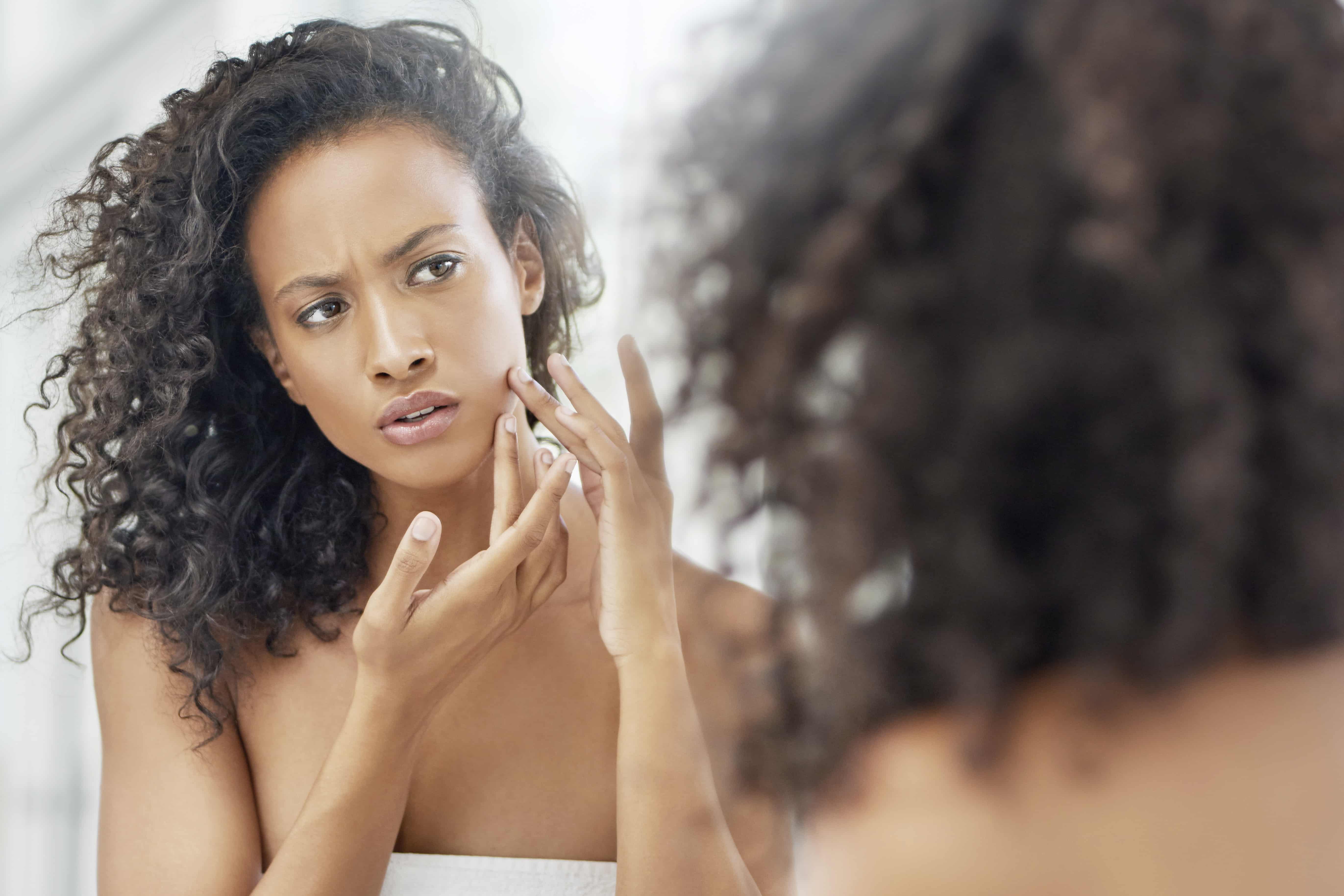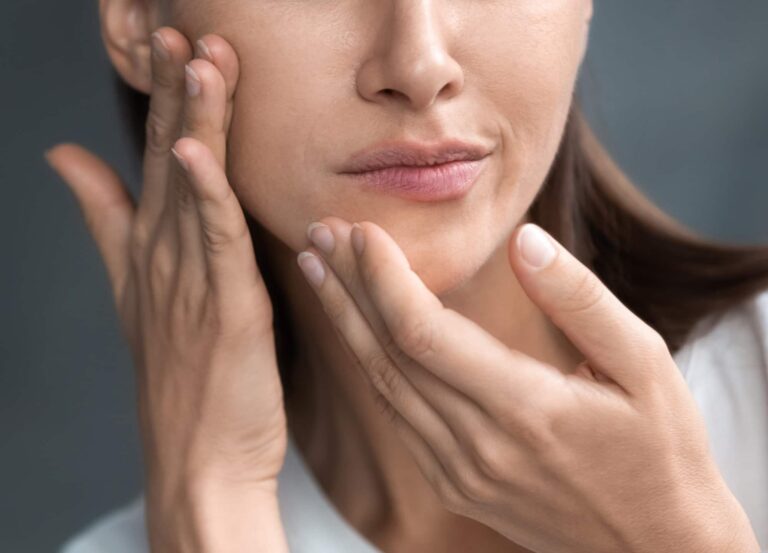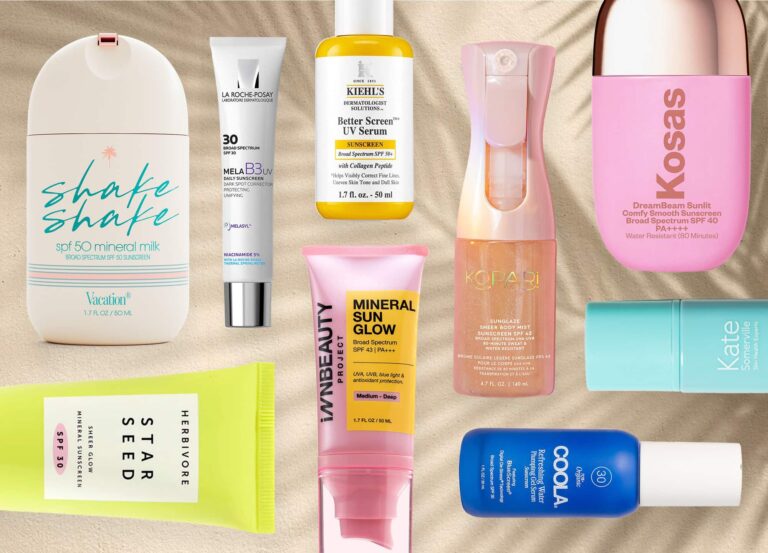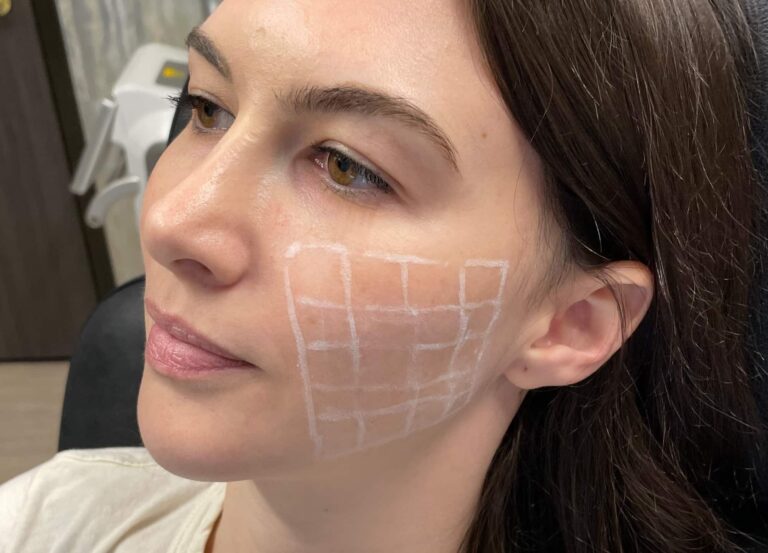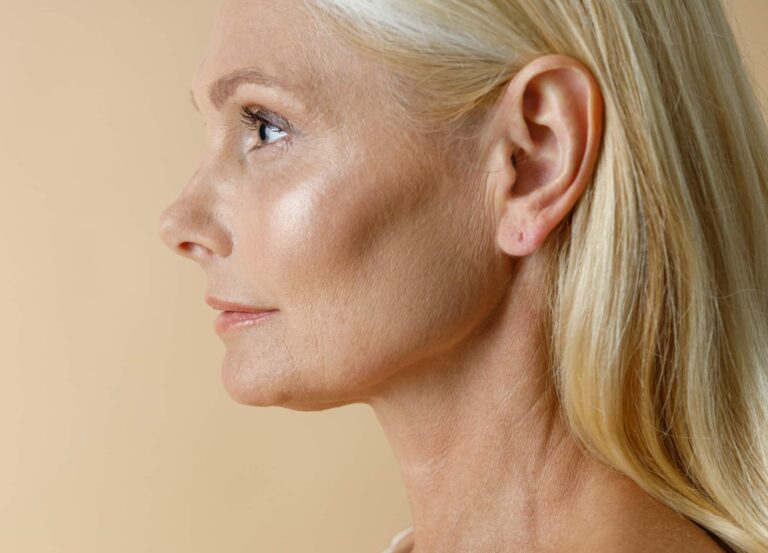Over the past few years, we’ve seen a major shift in beauty trends—especially in terms of skin care. Since March 2020, many people have been seeking out skin-care DIYs and testing home remedies to address common skin conditions—including, but not limited to breakouts, eczema, rosacea, and psoriasis—many of which can be triggered and exacerbated by stress, but also other lifestyle habits, diet, and contributing health factors.
Although you’ve likely been able to head back to your trusted dermatologist for treatment, it helps to know about the best at-home acne treatments and hacks for other inflammatory skin conditions for the next time you’re in a pinch. Treating these stubborn skin conditions at home isn’t a totally hopeless situation—so long as you heed the advice of the pros.
Home treatments for acne
“Ever since quarantine, we saw considerably more stress breakouts,” says Dr. Ava Shamban, a board-certified dermatologist in Beverly Hills, California. “This was in part due to general stressors like lack of sleep, rise in cortisol, and the release of other stress-inducing hormones, which increase sebum production and other imbalances in our skin.” As always, harsh products, overdoing it on skin-care, touching our face, and picking can also lead to blemishes. (During COVID, the introduction of face masks and the increased use of drying disinfecting agents also undoubtedly contributed to breakouts.)
Consult a dermatologist via telehealth
Acne conditions can easily be diagnosed during a telederm visit, so Dr. Shamban recommends reaching out to your doctor before taking matters into your own hands. “There is no need to guess or ‘self-help,’ which can potentially advance the condition,” she explains. “An acne flare may not seem to be a dire emergency, but the body is reacting to an issue [and] signaling for help. It does interfere with the quality of life and should be treated.”
How to extract pimples safely
While you’d be hard-pressed to find any skin-care expert who would encourage popping pimples or performing extractions at home, many realize that desperate times can call for desperate measures. If you’re going to do it, Los Angeles esthetician Candace Marino suggests prepping for it—particularly for whiteheads and blackheads— by:
- thoroughly washing your hands with soap and warm water for at least 20 seconds
- cleansing the face with light acids for mild exfoliation
- using heat or a DIY steamer, be it hot water or a shower (Marino advises skipping this step if you have melasma or pigmentation.)
When it comes to the actual extraction, “leave digging devices to the professionals to avoid potential permanent acne scarring, pigmentation issues, and injury,” she advises. Instead, wrap a tissue or cotton ball/swab around your fingers and gently pinch the skin together in an upward motion. “Press only in the direction you want congestion to go,” Marino warns. “If you press down into the skin, you’re making things worse and can potentially spread bacteria under the skin.”
After extracting the pimple, it’s important to cleanse the skin once more to prevent any environmental bacteria from entering the open pore. Also, using cold water can help calm the area and reduce inflammation. From there, star ingredients for acne-prone skin that can help reduce the size and severity of acne breakouts (via cleansers, spot treatments, lotions, acne medications, etc.) include:
- salicylic acid (to deep clean clogged pores)
- glycolic acid (to sweep away dead skin cells)
- retinol (to ramp up skin cell turnover)
- benzoyl peroxide (to kill bacteria that causes acne)
In addition, as far as creative DIY acne remedies go, the following topical ingredients—which similarly boast anti-inflammatory, antimicrobial, and antibacterial properties—can also help when you need a quick at-home acne remedy:
- tea tree oil (an essential oil solution to kill acne-causing bacteria)
- green tea (to combat inflammation via antioxidants)
- aloe vera gel (to soothe skin and combat redness)
- apple cider vinegar (so long as you dilute it and use it sparingly as a spot treatment)
Depending on the type of acne you have, these ingredients are worth seeking out to include in your daily skin-care routine to fight mild or moderate acne. While they can be effective to prevent and treat acne breakouts, don’t forget to restore hydration and moisturize right after to combat any drying effects.
As a final note, these at-home acne remedies aren’t ideal for cystic acne, which requires different forms of treatment that are best implemented under the care of a dermatologist.
Related: All the Skin Conditions You Can Get Treated Via Telemedicine Dermatology
At-home eczema remedies
“The biggest thing with eczema is prevention,” says Dr. Sapna Palep, a board-certified dermatologist in New York City. While the exact cause of eczema remains unknown, the condition is said to be the immune system’s response to an irritant.
Wash hands gently to improve skin health
“[Many of us are] all washing the hell out of our hands and constantly using hand sanitizer,” Dr. Sapna explains. “But if you’re at home and not going out, it doesn’t make sense to wash your hands and sanitize a million times a day. Just wash your hands the normal amount of time and only when you need to.”
Next, a simple solution to combat this dryness is to find an alcohol-free alternative. It’s also important to use lukewarm water when washing hands and pat them dry rather than scrub. After, moisturize with rich hand cream.
Shop for the right eczema products
Even when you’re doing everything you can to avoid irritants, bouts of eczema can still arise. When this does happen, most people turn to a prescription-grade cream from their doctors, which is still an option thanks to telemedicine. But if you’re limited to over-the-counter eczema treatments, try Gladskin Eczema Soothing Cream ($35), which moisturizes while delivering anti-bacterial properties, so it can be used as a therapeutic.
“Using a little OTC hydrocortisone for patches that are starting to appear can be good too,” says Dr. Palep. “Obviously, we prescribe the big guns, but if you just want a quick fix for patchy, itchy areas, this is a great solution.”
Limit contact with common skin irritants
Less obvious factors that can lead to eczema include fragranced skin-care products, scented detergent or fabric softener, and overly hot showers, which can all exacerbate existing eczema flare-ups. “A lot of the time, people will get the first episode of eczema, but they’re still doing all these things that make it worse,” the dermatologist notes. “So, if you eliminate these things right away, eczema will usually heal on its own.”
Rosacea treatments at home
“It’s really not clear how or why rosacea exists. It presents a range of skin expressions but generally comes in the form of small, red pimples and a ruddy appearance with vascularity, enlarged pores, and bumps around the eyes,” Dr. Shamban explains. With that said, you have several options that can help minimize flare-ups.
Limit triggers through diet and lifestyle
Dr. Palep mentions that rosacea triggers include:
- drinking red wine
- eating chocolate or spicy foods
- creating humid areas by wearing face masks or cooking over heat
While this list isn’t exhaustive and different patients will experience different contributing factors for rosacea, try to limit these dietary and lifestyle triggers.
Use the best topical ingredients for rosacea
Azelaic acid and niacinamide, both of which are available over-the-counter, can be very helpful in treating the condition. Popular skin-care products with these ingredients include Eucerin Redness Relief Night Creme ($9.69) and The Ordinary Niacinamide 10% + Zinc 1% ($6.50).
It’s important to note that most organic alternatives will only heighten rosacea, so you’ll want to skip them.
At-home remedies for psoriasis
Caused by an overactive immune system and triggered by stress, psoriasis often manifests as flaking, inflammation, and raised or scaly patches of skin. “They say 5% of the population has psoriasis, but I actually think it’s way higher than that because most people don’t even realize they have it,” says Dr. Palep. “They get it on their scalp and think it’s dandruff or on their elbows and think it’s just a dry patch, but it’s actually psoriasis. I think it’s actually one of the most undiagnosed skin conditions.”
Dr. Shamban adds that the condition is essentially “an excessive cell proliferation that can lead to thick build-up in patches on the face body, scalp, or even eyes,” but says psoriasis treatment isn’t a one-size-fits-all approach. There are a number of traditional prescription drugs available to psoriasis patients, but she says that certain biologics can actually be more effective in some cases. “They target specific proteins in the immune system that have been proven to be associated with psoriasis. For this reason, they have fewer side effects than less targeted treatments,” Dr. Shamban explains.
Seek out the best ingredients for psoriasis
The best products for psoriasis tend to be those that contain salicylic acid or urea in them, as they are particularly helpful in targeting the scaly rashes caused by psoriasis. Luckily, there are plenty of cleansers, moisturizers, and toners with these ingredients.
“If you have it in the scalp, using something like Neutrogena T/Sal Therapeutic Shampoo ($8.99) can get the scaling down. Also, Neutrogena T/Gel Therapeutic Shampoo ($7.99), which is chockfull of coal tar, can address flaking and itchiness,” says Dr. Palep.
Get some sunlight
While spending extra time in the sun is typically warned against by dermatologists, sun exposure can actually be quite helpful for psoriasis, as vitamin D can reduce inflammation and UV rays can clear or prevent psoriasis plaques. However, the same rule always applies when it comes to sun exposure: don’t go outdoors without applying sunscreen first.







